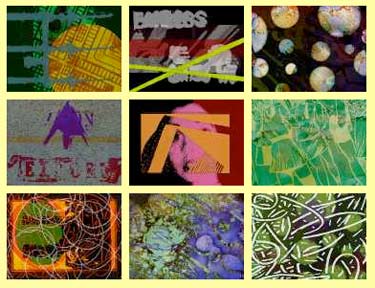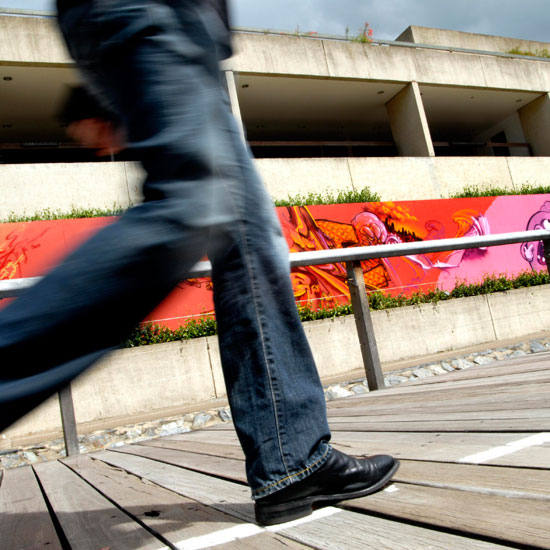Creating Culture
As generations of Aboriginal and Torres Strait Islander peoples have known for 60,000 years, creating culture is what we do.
We adorn ourselves with garments, beads, rings and tattoos; we create stories, myths, jokes and cinematic masterpieces; we use any surface we can find to scratch messages, honour gods and goddesses, and express beauty, terror and yearning through art making of all kinds. We dance and listen to music; compose poetry, screenplays and Tweets; build backyard sheds and soaring temples; knit beanies and exquisite tapestries; pack out music arenas to hear our favourite bands, go to majestic concert halls, or visit a local pub.
We buy books, lots of them, stream TV series and movies, play video games, and share photos on Instagram.
We flock to writers’ festivals and makers’ markets, art fairs and sculptures by the sea, Hackathons and anime classes, fashion shows and design museums.
Our capacity for cultural expression, participation and exchange is limitless.
Creating culture is what we do.
Everything we don’t have to do
But ‘creating culture’ does not take place in a vacuum. It is not values neutral. It is always contextual and therefore responsive to and in conversation with the economic, social, environmental and moral imperatives of history.
Brian Eno’s thought provoking Peel Lecture of 2015 still has currency in this regard.
Eno starts his lecture with a reaction to a contemporaneous pronouncement by a Conservative Education Minister who was discouraging students from going into the arts and humanities because it wasn’t a good employment prospect. It’s STEM that matters!
The term ‘creative industries’ may help artists get government money, Eno explains, but “this is the sort of beginning of the end of the art, really, if we start to try to make things expressible by single numbers in that way.”
He sets up his terms of reference early in the talk. He’ll concentrate on defining culture as the creative arts. And what is art?
Art is everything you don’t have to do.
Does this mean that art can be framed as a luxury? Or, does it do something for us beyond this notion of luxury or excess?
Art is how adults play, says Eno; play can be serious.
Art may not be ‘necessary’, but it does an awful lot.
It allows us to experience emotions and sensations that could be dangerous or overwhelming outside the medium art provides. You can feel intensely through art, and explore ideas and values. It’s like a simulator. You can enter alternate worlds, experience strong feelings, and then leave.
Culture is like a collective ritual; it helps us synchronise with each other, to stay coherent.
And how does it comes about, how do we support culture making? It’s a collective process, Eno says. There are places and spaces; there’s money and patrons; there are opportunities and places to learn; for him there were scholarships and the dole; there is a ‘scenius’ as opposed to individual genius. Scenius is the talent of a whole community; a word that I don’t think will necessarily take off, but the concept is important. Ultimately, Eno presents us with a paradox: art is everything we don’t have to do; art is central to life.

Brian Eno: 77 million paintings
Framing Culture
Everyone I work with is keen to find new language and new frames for describing this incredible human thing that we do: creating culture.
We face a monumental task though. What seems self evidently ‘true’ is the logic of the market, of efficiency and instrumentality. It is hegemonic, leaving other forms of knowledge and discourse in its wake.
It is hard for those so wedded to conceive of, let alone argue for, something so diffuse as ‘culture’, and its fundamental public value, when even the notion of ‘public’ and ‘collective good’ has become so contested and degraded.
We need to be clever. Ideas come before policy, and the ideas that animate our work revolve in one way or another around the notion that art-making, or culture-making, is the central thing that we humans do. We don’t have to apologise for it or protest that it isn’t a ‘luxury’. We have to own its centrality.
The more we use the term ‘creative industries’, the more we inadvertently reinforce the frame of ‘industry’ and instrumentality. If we decry that art is not a luxury, we reinforce the neural connections between art AND luxury.
I have stopped using terms like ratepayer and tax payer for this reason. I now use the term citizen in order to reinforce a frame that is about civic belonging and responsibility.
We need to find the values and ideas that we want to reinforce. It’s not about spin; it’s about values.
Let’s go back to Eno for a moment, what language does he use?
He talks about art being like a simulator; about helping us to stay in synch with one another; art being how adults keep playing and therefore learning; imagination being the central human ‘trick’; imagination as a tool for empathy and the capacity to invent and inhabit different worlds; culture as an ecosystem etc.
Some of these things are not new, but they are worth building on in terms of reinforcing the frames we want activated and strengthened.
We need what art gives us: that unique ability to take us out of the quotidian concerns of life and into a realm of play, metaphor, imagination, sensation, and the seduction of being alive. This is our heritage.
If art (in all its manifestations) is essential to who we are and what we do; what we enjoy, take pleasure in, enact strong emotions through, get ideas from, share with others in high and low intensity ways, we shouldn’t have to re-prosecute its value/benefits over and over again. We need to go on the offensive, but artfully, with colour, rhythm, melody, poetry, texture, humour and joy.
Edited talk from ‘Creating Culture’, lecture for Australia Council for the Arts: Festival Arts Leadership Exchange, Adelaide (2017)
References:
Eno, B. (2015) BBC Music John Peel Lecture



